Wife of Founding Father Charles Pinckney
Image: Charles Pinckney
Charles Pinckney (1757-1824) was an American politician who was a signer of the U.S. Constitution, Governor of South Carolina and a member of the U.S. Senate and House of Representatives. An ardent believer in the rights of man, he helped to establish a strong national government so that “the effects of the Revolution may never cease to operate,” but continue to serve as an example to others “until they have unshackled all the nations that have firmness to resist the fetters of despotism.”
Mary Eleanor Laurens was born April 27, 1770, at Charleston, South Carolina, the daughter of Eleanor Ball Laurens and Founding Father Henry Laurens. Charles Pinckney was born into the South Carolina low-country aristocracy on October 26, 1757, the son of Frances Brewton and Charles Pinckney. His father, a wealthy lawyer and planter, owned seven plantations scattered throughout the colony. Snee Farm, which the elder Pinckney purchased in 1754, was one of the family’s favorite country retreats.
Pinckney was educated at home by tutors, and intended to study law in England, as was the custom. However, the growing unrest between England and the American colonies changed his plans, and he instead studied law in his father’s office. In 1779, he was admitted to the South Carolina bar, but never saw a career in the law as his major vocation. Coming of age in the midst of the American Revolution, he turned naturally to politics, and at age 22, began a forty-year career of public service as a member of the South Carolina General Assembly.
After the outbreak of the Revolutionary War, Pinckney joined the Charleston Militia Regiment, commanded by his father. In October 1779, the Pinckneys fought in the unsuccessful attempt to retake Savannah from the British. During this time, Charles also served as a member of the South Carolina Assembly from 1779-1780, and attended legislative sessions in Charleston.
By early 1780 General Benjamin Lincoln and his army, including the Pinckneys, had been pushed back to Charleston. Redcoats, Hessians and Loyalists then began pounding the city with heavy artillery and choking off its food supply. On May 12, 1780, Lincoln’s army surrendered in what was the single worst defeat suffered by Americans in the Revolution.
Captured by the British, Charles Pinckney came under intense pressure from the British, who hoped to induce him to renounce the Patriot cause. But the young officer resisted, and with the tide of war turning against them, his captors revoked his parole and incarcerated him. In the summer of 1781, the British agreed to a prisoner exchange and moved Charles Pinckney to Philadelphia, where he was exchanged as a prisoner of war.
Pinckney’s father, Colonel Pinckney, had fled Charleston before the Patriots surrendered the city, but returned to the city and swore loyalty to the British, which allowed him to keep his property. In February 1782, as retribution, the South Carolina legislature voted a 12% fine of Colonel Pinckney’s vast holdings. In spite of pleas by his cousin Charles Cotesworth Pinckney and Congressman Arthur Middleton that he return to help his father, Charles Pinckney remained in Philadelphia until the end of the war.
Colonel Pinckney owned several plantations as well as a large town house in Charleston. He died on September 22, 1782, leaving Snee Farm, a 715-acre country estate outside Charleston, to Charles, which he owned until 1816. Easily reached from Charleston by boat, Snee Farm was both a working plantation and an accessible country retreat for the Pinckneys.
Though retaining his position in the militia, Pinckney retired from active service to resume his duties in the South Carolina legislature. Meanwhile, in 1784 he was sent to represent the state in the Continental Congress, a post he held for three successive terms. Pinckney’s service in the postwar Congress served to reinforce the lessons he had learned during the Revolution – that the problems facing America were too large to be met by the states individually but demanded the close cooperation of all the states.
Returning to South Carolina in 1784, Pinckney simultaneously served in the General Assembly and the Continental Congress, where he served from November 1784 until February 1787. In the Congress, Pinckney became acquainted with national figures like John Jay and Robert R. Livingston of New York, James Monroe of Virginia and Rufus King of Massachusetts.
Pinckney was an active member from the start, serving on important committees and earning the respect of fellow members. He became an early advocate for strengthening the national government, and in 1786, he began to call for a general convention of the states, along with men like Alexander Hamilton and James Madison.
When Congress called a Constitutional Convention to meet in Philadelphia in May 1787, South Carolina sent four wealthy lowcountry planters to represent the state: John Rutledge, Pierce Butler, Charles Pinckney and his cousin Charles Cotesworth Pinckney.
Charles Pinckney, at 29, was the second youngest delegate in the Convention, but his youth did not prevent him from speaking out – more than 100 times. He introduced a comprehensive plan of a constitution early in the proceedings and argued forcefully for a strong federal government, was reluctant to give too much power directly to the electorate, and worked to protect the special interests of the southern states, particularly slavery.
On May 25, 1787, a quorum of delegates from the various states assembled in Philadelphia. After electing George Washington as the presiding officer, Charles Pinckney, Alexander Hamilton and George Wythe were appointed as a rules committee to establish the procedures under which the convention would operate.
The Pinckney Plan?
On May 29, 1787, immediately following the introduction of the Virginia Plan for a new constitution by Edmund Randolph, Pinckney rose and addressed the Convention. In his remarks he outlined his ideas for the new government based on the principles of a strong national government and the separation of powers – very similar to the Virginia Plan.
No copy of the controversial Pinckney Plan has survived. In 1818, Pinckney supplied Secretary of State John Quincy Adams with a version of his plan that Pinckney believed was substantially similar to the lost original. Later historians have accredited to Pinckney the suggestion of a number of provisions of the constitution as a result of their efforts to reconstruct his original plan from his speeches and the papers of Pennsylvania delegate James Wilson.
On September 17, 1787, the convention completed its business and adjourned. Ten members of the Convention, including Charles Pinckney, were also members of the Confederation Congress still meeting in New York. While the delegates went home, Pinckney and the other congressmen hurried to New York. Only eight days after the proposed Constitution had been presented, the Confederation Congress voted to send it as “a report” to the legislatures of the 13 states for ratification.
While in New York, Pinckney hastily assembled a pamphlet, Observations on the Plan of Government Submitted to the Federal Convention in Philadelphia on May 28, 1787, by Charles Pinckney, that contained his arguments for a stronger federal government. When he returned home to South Carolina, the pamphlet was reprinted in the State Gazette of South Carolina.
When the delegates to the South Carolina ratification convention gathered in Charleston May 12, 1788, Charles Pinckney was the first to speak. His remarks attracted national attention and were reprinted in a Philadelphia periodical, American Magazine. On May 23, 1788, South Carolina voted to ratify the Constitution.
Mary Laurens married Charles Pinckney April 27, 1788, and they had three children: Frances, Mary and Henry.
In January 1789, the General Assembly elected Charles Pinckney Governor of South Carolina. It would fall to the 31-year-old governor to establish precedents for the relationship between his state and the new United States government. One of his first duties was to administer the oath of office to the state’s members of the electoral college, all seven of whom cast votes for George Washington.
Mary Laurens Pinckney died October 6, 1794, after only years of marriage. She was buried at the Laurens Family Cemetery at Moncks Corner, South Carolina.
During the nation’s formative years, Pinckney supported the Federalist Party. By 1795, however, he had come to view the Federalists as the party of the rich and well-born, and joined the newly formed Democratic-Republican Party, championing the interests of rural Americans over those of the tidewater aristocracy. In 1798 his Democratic-Republican supporters helped him win a seat in the U.S. Senate.
During the Presidential campaign of 1800, Pinckney was South Carolina campaign manager for Thomas Jefferson and Aaron Burr, helping him win the election. As a reward, Jefferson appointed him Ambassador to Spain, a post he held from 1801 to 1805. During that time, he helped to facilitate the transfer of Louisiana from France and made a valiant but unsuccessful effort to get Spain to cede Florida to the United States.
Upon completion of his diplomatic mission, Pinckney headed back to Charleston to lead the state Democratic-Republican Party. He sat in the legislature (1805-1806), was again elected as Governor (1806-1808) and served again in the legislature (1810-1814). Pinckney closed out a distinguished career of public service with a term in the U.S. House of Representatives (1819-1821).
In 1821, his health beginning to fail, he retired from politics, and spent his final years writing of his travels and political life.
Charles Pinckney died in Charleston on October 29, 1824, three days after his 67th birthday, and was buried at St. Philip’s Episcopal Churchyard there.
SOURCES
NNDB.com: Charles Pinckney
Wikipedia: Charles Pinckney
Charleston County Public Library: Charles Pinckney and the U. S. Constitution
Charles Pinckney National Historic Site – PDF File
Soldier-Statesmen of the Constitution: Charles Pinckney
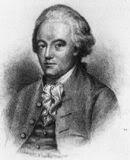

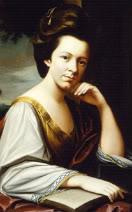
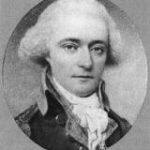
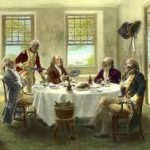
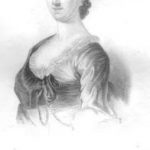

I was a little disappointed by this post. I was hoping to learn more about Mary Pinckney, but this post is almost entirely about her husband, with a few brief mentions of her.
I felt the same way.